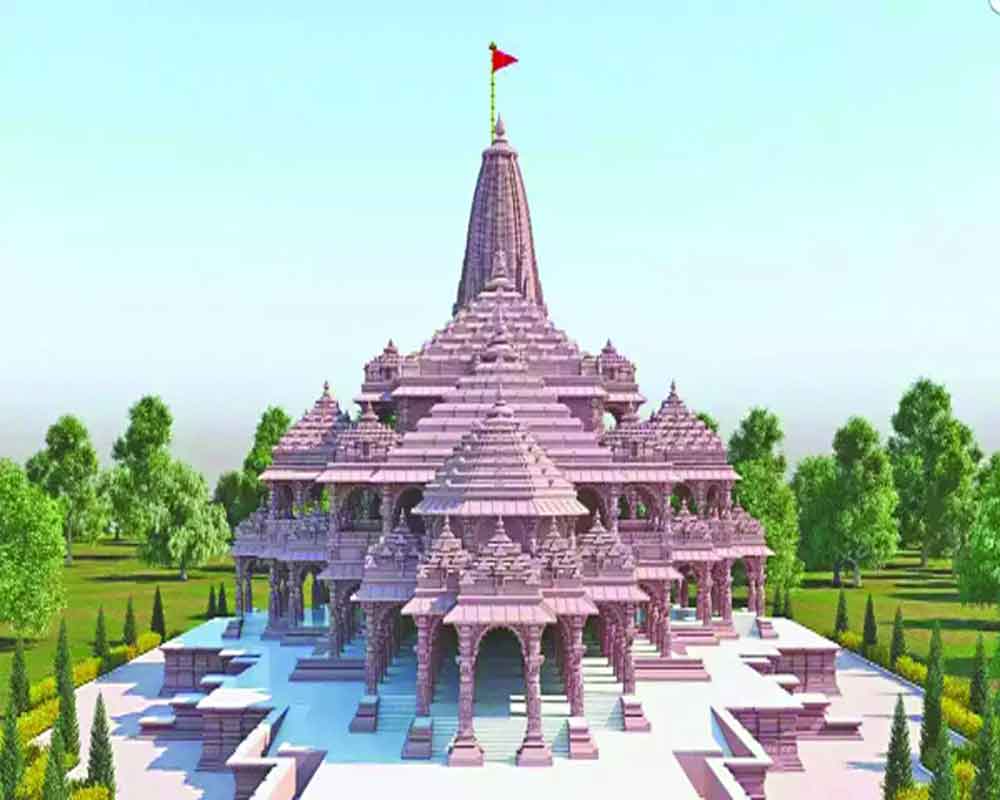The Ram temple is a promise that the BJP has fulfilled. The temple inauguration could weaken the Opposition campaign and affect the general elections 2024
The grand Ram Temple in Ayodhya is all dressed up for the inauguration of the Ram temple on January 22 by Prime Minister Narendra Modi. It is fulfilling a longstanding dream of the BJP and the Sangh Parivar. A Hindu mob destroyed the Babri Masjid in 1992, claiming it was built on an ancient Hindu temple site in Lord Ram's birthplace. The communal conflict ended when the Supreme Court decided the disputed area belonged to the Hindus in 2019.
The fact that Muslims have abided by the rule of law and accepted the SC verdict in the spirit of closure is laudable. The Uttar Pradesh Sunni Central Waqf Board was offered five acres of land in Dhannipur village, Ayodhya, where they could build a mosque. However, Reuters has reported that the city's sizeable Muslim community of an estimated 350,000 said they are not reaping the benefits of the reported boom.
The Ram temple story is more political than religious. On November 9, 1989, the Vishva Hindu Parishad (VHP) performed the Shilanyas ceremony. On August 5, 2019, Prime Minister Modi laid a 40 kg silver brick to mark the beginning of the construction of the Ram Temple in Ayodhya. Ayodhya is a city of great cultural, religious, and political significance. The Temple's construction is a victory for the BJP, the Rashtriya Swayamsevak Sangh, which led the movement and Modi, whose political career has coincided with the rise of Hindu nationalists.
The intense fight by BJP leaders L.K Advani and Dr Murli Manohoar Joshi cannot be underrated. The inauguration of the Ram Temple holds great importance in the BJP's campaign for the 2024 elections. The Modi government has fulfilled two of its poll promises. They are -constructing the Ram Temple and revoking Article 370 which granted special status to Jammu and Kashmir. Implementing a uniform civil code is the third core issue that needs to be addressed. The Ram Janmabhoomi movement, which started in 1989 and was led by BJP leaders Lal Krishna Advani and Dr Murli Manohar Joshi in 1992, played a significant role in the BJP's current political dominance. The movement aimed to gain the support of Hindus for political purposes, as Advani openly admitted.
The Vishva Hindu Parishad, a front organization of the Sangh, led the Ayodhya agitation to construct the Ram temple. The Sangh believes building the Temple is crucial to establishing Hindu Rashtra. In 1992, a Hindu mob demolished the Babri mosque located on the disputed site. This resulted in widespread riots throughout the country. It led to the deaths of approximately 2,000 people, mostly Muslims.
In 2019, the Supreme Court ruled that the disputed Babri Masjid site belonged to Hindu groups. Just four years later, Prime Minister Narendra Modi's team completed the construction of a temple at the site. The Sangh Parivar could use this event to boost community pride. The BJP plans to promote the Temple's message and symbol. Finally, the Ram temple propaganda could weaken the Opposition campaign. Before the inauguration, Prime Minister Narendra Modi launched several projects worth Rs 22000 crores, including a new airport and railway station on December 30.
Seven new temples will be built within the Temple to honour seven significant figures from Ramayana. These figures include Maharishi Valmiki and Shabri from the Dalit community, Nishad Raj from the fishing community, Acharya Vashisht from the Brahmin community, Rishi Vishwamitra from the Rajput community, and Ahalya and Agastyamuni, who are revered by various castes and communities.
The Ayodhya movement had a social impact. The Mandal Commission report, implemented by the VP Singh government, consolidated the OBC vote behind parties that advocated social justice. It combined both the Mandal and Kamandal movements. The current political dominance of the BJP cannot be solely attributed to the Ram temple issue. From 1991 to 2009, their vote share remained around 20%. However, under the leadership of Modi in 2014, the BJP's vote share increased to over 30%, and it secured a majority in Lok Sabha after 30 years.
This percentage rose further in 2019. With the construction of the Ram Temple, the BJP may gain more Hindu votes in 2024. After the death of Rajiv Gandhi, the Congress party distanced itself from the Ram Mandir issue, while the BJP consolidated the Hindu community. The party is confused about whether to adopt a soft Hindutva which may cost it Muslim support. Muslims have begun to support care-based and secular organisations like the Samajwadi Party, Rashtriya Janata Dal, and Bahujan Samaj Party.
The decision of the Supreme Court brings an end to the longstanding conflict and paves the way for peace and development in Ayodhya. With the Centre and state government's commitment to the area, it is expected that Ayodhya will soon be equipped with modern facilities, which will significantly benefit its inhabitants. This progress will lead to a brighter future for the people of this city.
(The writer is a popular columnist, views are personal)


























